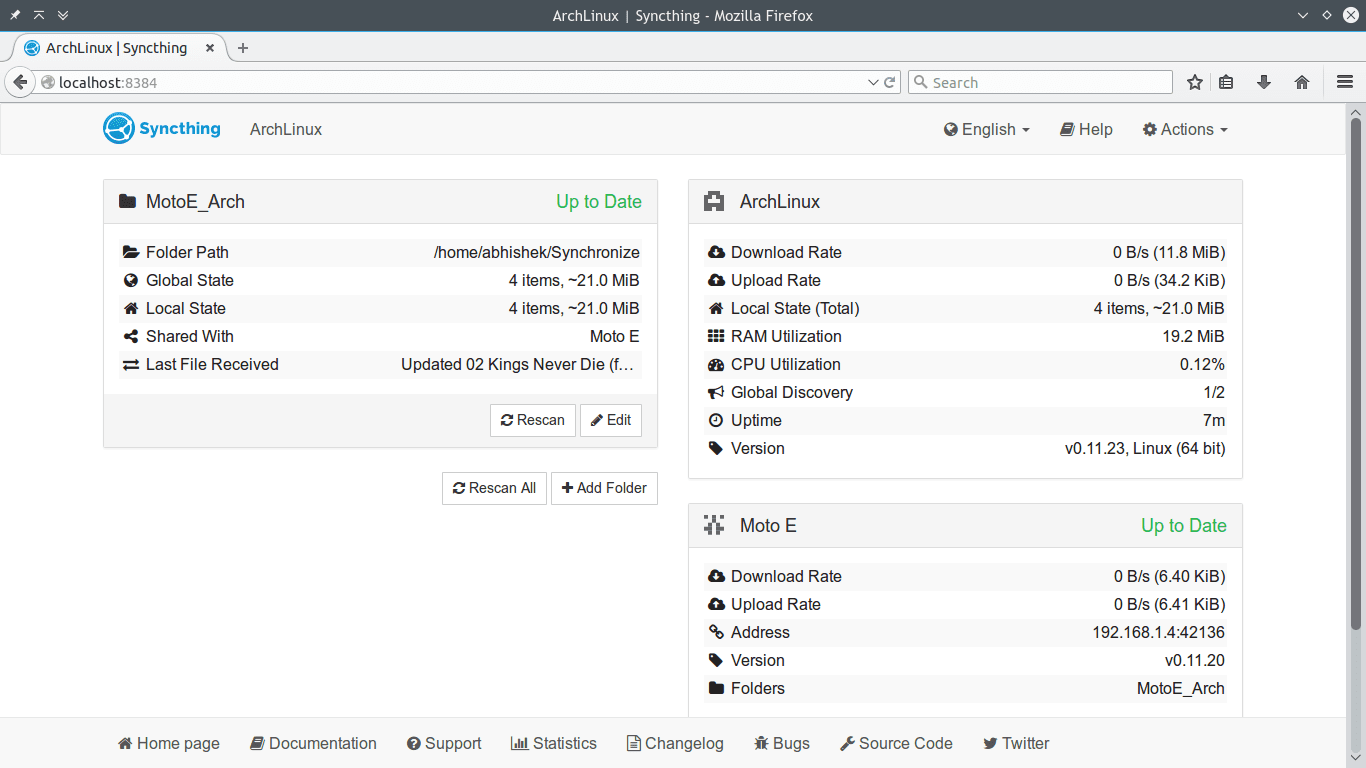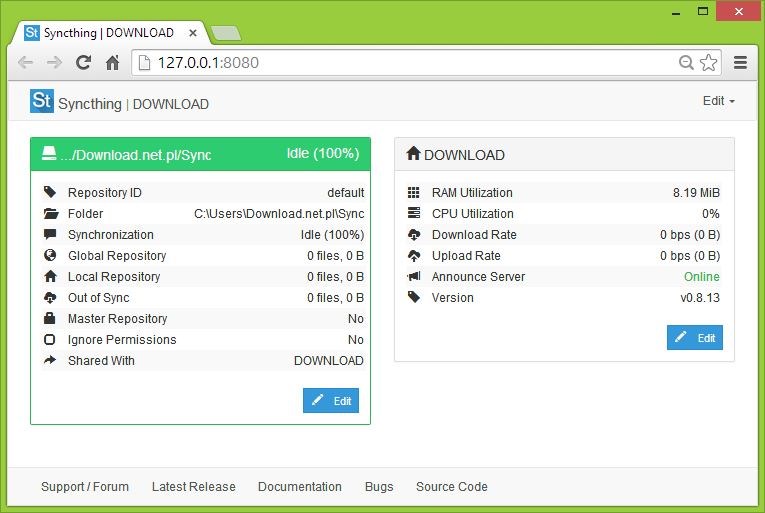

- #Syncthing vs btsync update
- #Syncthing vs btsync manual
- #Syncthing vs btsync full
- #Syncthing vs btsync software
- #Syncthing vs btsync free
Such a use case clearly requires a sync application and is not covered by a web server as it is essential to have a two-way sync between the colleagues on the road and the office.
#Syncthing vs btsync full
It also improves collaboration as I can see if someone added files/moved/deleted files without having to sync the full contents. I don’t know the specific file or folder names but I can navigate there quickly.
#Syncthing vs btsync manual
Here using “on-demand sync” I go into the folder, open the metadata file and start my way up from the last image opening them as necessary, this requires only a few hundred MB of disk space and transfer quota.Īs far as I can see this is currently in syncthing very difficult to achieve using manual manipulation of ignore files without downloading essentially complete projects to access (read and write) a few files.
#Syncthing vs btsync update
Now I receive a request from a colleague to “Please check and update the metadata of project_c by looking into the last images”. moving images from one component folder to another or similar. In the meantime my colleagues might change the directory structure slightly, e.g.

#Syncthing vs btsync free
Here currently syncthing allows with the ignore files to exclude certain folders to reclaim the disk space, other sync applications allow using such a “selective sync” feature to free the disk space as well. At some point this grows beyond the available disk space. This directory structure is shared among multiple colleagues both on-premise and on the road. projects/project_a/summary/metadata.xlsx

projects/project_a/data/raw/component1/image_0002.jpg to …/component7/image_0768.jpg With each containing a sub-hierarchy such as Here I give one case from real-life example: The use cases can vary a bit in the details, but the general structure is almost identical.

The discussion around this feature came up often over the last years and maybe would benefit from bundling this information together a bit. Such a feature is known in different synchronization applications under quite different terms: Selective Sync / On demand sync / Smart Sync / Placeholder file sync.
#Syncthing vs btsync software
So whether the software is open source or not is no longer important as a reason for switching. This worries many users and that is one of the reasons why quite a few are turning away from Resilio and continue to work with Syncthing, because the maintainers take care of the users and their problems and the software is continuously being further developed and adapted to the new operating systems.Īnd it is precisely these advantages that you no longer have with Resilio, at least for the moment. Up until a few years ago, this was similar with Resilio, but nothing seems to be happening now. The consumption of resources, which becomes a problem with small network bandwidths and especially because of the update policy.Īt Syncthing we have the advantage that the software is optimized and further developed in small and clear steps. However, I turned away from Resilio for two main reasons. Of course, I would like all these features, which are obvious for everyday life, also with Syncthing. And well, Resilio still runs on most platforms, but unfortunately not as flawlessly as they have progressed. There’s no question about it, with local sync, selective sync, folder sharing via identity, etc., Resilio is clearly a tool for fans of features. I’ve used Resilio for years and have already worked with the former BTsync. That can sometimes go wrong if it is forgotten. In everything, the ignore list must be in the foreground. It looks different when files are added, deleted or renamed, etc. Such elements are seen in the ignore list. However, it is then not possible to see directly what physical elements are still available remotely and which could be downloaded. This becomes easier if complete folders are ignored, as otherwise an overly long Ignore List can arise, which could also negatively affect performance. That would mean opening the list, editing it accordingly and closing it again. For now, I’d just work with Ignore Patterns. Something similar would have to be built into Syncthing as a feature. If you want to have additional folders or individual files physically on your computer, the links are processed accordingly. The selected folders and files will be downloaded and synced normally. Then in a little browser it is chosen what should be physically synced. With selective sync, Resilio first creates a complete directory together with the files of the folder with the help of links.


 0 kommentar(er)
0 kommentar(er)
